Healthcare apps face increasing risks from data breaches, compliance failures, and operational inefficiencies. Enterprise Risk Management (ERM) systems address these challenges by improving security, reducing errors, and ensuring regulatory compliance.
Key takeaways:
- Risk Reduction: ERM systems cut diagnostic errors by 23% and reduce data breaches by 40%.
- Compliance Support: Helps meet HIPAA and GDPR standards with encryption, access controls, and audit logging.
- Performance Boost: Real-time monitoring improves EHR integration, reducing medication errors by 38%.
- Native Development Advantage: Offers stronger security compared to low-code platforms, protecting sensitive patient data.
With over 350,000 healthcare apps available globally, ERM systems are essential for balancing security, compliance, and operational efficiency in this complex ecosystem.
Healthcare’s Enterprise Cyber Risk Management Imperative
Meeting Healthcare App Compliance Standards
Healthcare apps that use ERM frameworks face a maze of regulatory requirements, especially when it comes to HIPAA and GDPR. Recent stats reveal that 95% of mobile health apps fail at least one OWASP MASVS security category [6]. This underscores the pressing need for robust compliance strategies.
HIPAA and GDPR Requirements
To comply with HIPAA, healthcare apps must implement specific technical safeguards. Here’s a breakdown of some key requirements:
| Requirement | Technical Implementation | Compliance Impact |
|---|---|---|
| PHI Encryption | AES-256 for data at rest and in transit | Satisfies §164.312 standards |
| Access Controls | Role-based access with multi-factor authentication | Meets §164.308 rules |
| Audit Logging | Encrypted logs retained for 6+ years | Fulfills §164.316 requirements |
For GDPR, apps must focus on data minimization and explicit consent. Automated audit trails and anonymization are essential to meet these requirements [8].
While these safeguards lay the groundwork, integrating third-party services adds another layer of complexity, often increasing compliance risks.
Compliance Challenges with Third-Party Integrations
Third-party integrations are a major compliance hurdle. A staggering 61% of health data breaches involve external vendors [1]. Adding to the challenge, only 22% of EHR-connected apps currently support FHIR standards [7], creating gaps in both interoperability and security.
Native app development approaches, like those from Sidekick Interactive, offer stronger compliance tools compared to low-code platforms. For instance, native iOS and Android apps support device-level encryption for biometric authentication and custom TLS certificate pinning – both critical for HIPAA compliance [2]. These features highlight the security advantages of native development, which we’ll explore further in our analysis of access control frameworks.
To measure compliance effectiveness, monitoring these metrics is crucial:
| Metric | Target Threshold |
|---|---|
| OAuth 2.0 API Usage | Over 95% of calls |
| PHI Access Anomaly Detection | Within 60 days |
| Vendor Audit Completion | 100% quarterly |
A well-rounded ERM framework must address both the technical and operational sides of compliance to succeed.
Data Security Architecture for ERM
ERM systems face unique compliance challenges, especially when handling sensitive patient information. To meet these challenges, they rely on layered security architectures that safeguard data and ensure operational reliability.
Data Protection and Access Controls
A strong security framework uses multiple protective layers to secure patient data:
| Security Layer | Implementation Details |
|---|---|
| Data Encryption | AES-256 with hardware-backed keystores |
| API Security | Certificate pinning and synthetic traffic detection |
| Access Management | Biometric authentication with time-based OTPs |
| Audit Logging | Write-once-read-many storage with hash chaining |
This zero-trust model mitigates risks tied to third-party integrations by enforcing continuous authentication and using real-time behavior analysis to detect unusual access patterns.
Native vs Low-Code Development
The NowSecure 2023 report highlighted key differences in security capabilities between native development and low-code platforms:
| Security Feature | Native Development | Low-Code Platforms |
|---|---|---|
| Encryption Implementation | Custom hardware-level security | Limited platform-based features |
| API Protection | Full control over protocols | Vendor-dependent security |
| Biometric Integration | Advanced biometric authentication | Basic authentication only |
| Data Flow Control | Granular access management | Limited customization |
Healthcare apps often reveal vulnerabilities that low-code platforms struggle to address. For instance, 77% of tested mHealth apps had unsecured API credentials, and 50% of healthcare APIs lacked proper authentication tokens [6].
"50% of healthcare APIs lacked proper authentication tokens, creating backdoor access to sensitive patient data including social security numbers and treatment histories." – Onix Security Team, March 2024 [6]
To counter these risks, ERM systems incorporate measures like tokenizing payment data and social security numbers. By combining this with just-in-time access provisioning, they achieve a flexible security setup that protects sensitive data without disrupting clinical workflows.
sbb-itb-7af2948
Performance Management in ERM Systems
Healthcare ERM systems rely on strong performance monitoring to ensure both security and smooth operations. While security is a core requirement, these systems must also meet strict performance standards to avoid operational risks. Today’s systems prioritize real-time metrics tracking and resource management to work seamlessly with EHR platforms. For example, delays in critical processes like medication reconciliation can directly affect patient safety, highlighting the importance of performance monitoring in ERM systems.
EHR Integration Metrics
Monitoring performance in EHR-integrated systems involves tracking specific key metrics. For instance, Cleveland Clinic‘s 2023 Epic integration achieved a 38% reduction in medication errors and improved response times from 870ms to 290ms by using real-time monitoring.
| Metric Category | Target Performance | Impact on Operations |
|---|---|---|
| API Success Rate | ≥99.9% | Ensures uninterrupted data access |
| FHIR Query Response | <2s for 95% of requests | Keeps clinical workflows running smoothly |
| Error Rate | <5 per 10k transactions | Minimizes issues in data reconciliation |
| Authentication Time | <50ms during peak loads | Supports high concurrent user demands |
"The proactive monitoring we implemented for our Epic integration surfaces performance bottlenecks before they impact clinical workflows." – Dr. Maria Chen, CMIO at Massachusetts General Hospital [6]
Resource Management for ERM Apps
Proper resource allocation plays a critical role in maintaining ERM system performance. Modern architectures often use dynamically scalable modules to make the best use of resources. Tests show that memory-optimized instances for PHI encryption deliver 35% higher throughput compared to standard configurations [3].
Some effective resource management strategies include:
| Strategy | Implementation | Performance Impact |
|---|---|---|
| Load Balancing | Global server distribution with health checks | Reduces regional outages by 90% [8] |
| Memory Management | Hardware-backed encryption modules | Doubles the speed of PHI encryption [2] |
| API Optimization | OAuth2 token validation | Cuts latency spikes by 40% [2] |
| Cache Management | Active-active Redis clusters | Keeps authentication times under 50ms during peak loads [1] |
ERM Implementation Guide
To move forward effectively, healthcare organizations should prioritize strategic implementation by working with trusted partners and leveraging advanced technologies. The healthcare compliance software market is projected to hit $86 billion by 2032, growing at an 11.4% annual rate [9].
Choosing ERM Integration Partners
Selecting the right partner is crucial for a successful ERM rollout. Organizations should assess vendors based on key criteria that ensure both compliance and operational efficiency:
| Selection Criteria | Requirements | Impact |
|---|---|---|
| Security Certification | HITRUST CSF, ISO 27001 | Aligns with healthcare compliance requirements |
| API Capabilities | Support for SMART on FHIR | Expands app compatibility by 22% [7] |
| Data Protection | TLS 1.2+, AES-256 encryption | Safeguards PHI during data transmission [4] |
| Performance Metrics | Response time under 200ms for PHI access | Facilitates real-time clinical workflows [4] |
Native development has shown to be particularly effective for healthcare ERM systems. It offers enhanced security compared to low-code platforms, especially for sensitive healthcare data. For example, Sidekick Interactive has demonstrated these advantages in their projects. Similarly, TigerConnect‘s use of end-to-end encryption across over 700 hospitals led to a 62% reduction in PHI breaches in 2023.
New Developments in Healthcare ERM
Recent advancements are reshaping how ERM systems are implemented. Cleveland Clinic’s collaboration with Epic Systems highlights the role of AI in improving outcomes, achieving an 89% accuracy rate in preventing medication errors through FHIR API integration.
Here are some technologies driving change in ERM implementations:
| Technology | Implementation Impact | Current Results |
|---|---|---|
| AI Risk Assessment | Minimizes manual audits | Boosts compliance efficiency |
| IoT Medical Devices | Enables real-time monitoring of vitals | Improves patient data accuracy |
| AR Clinical Interfaces | Enhances data visualization | Simplifies clinical workflows |
These innovations build on earlier encryption and access control measures. To maintain security, organizations should conduct quarterly penetration tests for API endpoints [6] and adopt certificate pinning in line with OWASP MASVS standards [2].
IoT medical devices bring additional considerations, such as the need for edge computing capabilities and secure MQTT protocols [4]. Federated learning has also proven effective, maintaining 98% accuracy across networks [1], underscoring its potential for secure and efficient ERM systems.
Summary and Future Outlook
The healthcare ERM integration field is evolving quickly, fueled by new technologies and changing regulations. According to recent projections, the global healthcare ERM market is expected to hit $3.57 billion by 2026, growing at a 12.5% annual rate from 2021 to 2026 [10].
Three key technologies are driving this transformation:
| Technology Trend | 2025 Projection |
|---|---|
| AI-Driven Risk Analysis | Anticipated 45% drop in manual audit needs |
| Real-Time Monitoring | Seamless integration with IoT medical tools |
| Automated Compliance | Mandatory real-time audit submissions |
Specialized development partners play a crucial role in these advancements. For instance, companies like Sidekick Interactive deliver secure solutions that maintain sub-50ms API latency while adhering to strict PHI protection standards. This combination of speed and security highlights the importance of working with experts in native development.
By 2026, healthcare organizations will face notable regulatory updates, including:
- Mandatory real-time audit trail submissions to CMS [1]
- Stronger GDPR-HIPAA alignment, requiring dual-key encryption [2]
- Quarterly compliance checks, replacing annual audits [6]
These changes aim to close compliance gaps in third-party system integrations, as discussed earlier. AI and machine learning are also gaining traction, particularly in predictive risk modeling, which builds on real-time monitoring strategies.
The challenge remains balancing enhanced features with the strict security demands of existing compliance frameworks. Organizations leveraging native development and expert partnerships are better equipped to navigate this increasingly complex regulatory environment.
FAQs
Why would an enterprise risk management approach be important to an integrated hospital system?
Enterprise Risk Management (ERM) plays a key role in improving both patient safety and operational efficiency in integrated hospital systems. A 2024 Johns Hopkins pilot study found that using real-time ERM monitoring reduced preventable adverse events by 22% [1][5]. This highlights how ERM goes beyond compliance, directly enhancing care delivery.
Here’s how ERM impacts specific areas:
| Area | Impact | Measurable Outcome | Implementation Requirements |
|---|---|---|---|
| Patient Safety | Real-time risk detection | Over 85% of critical risks identified within 72 hours | Regular threat model reviews |
| Compliance Management | Automated monitoring | 95% adherence to HIPAA/GDPR requirements | Continuous audit logging |
| Clinical Operations | Integrated risk assessment | 40% fewer diagnostic errors | Automated dosage checks and test alerts |
For example, automated dosage checks and duplicate test alerts, powered by integrated clinical decision support, help identify and address risks across different operational areas.
This systematic approach not only ensures consistent risk management but also supports regulatory compliance. It’s particularly effective when incorporating emerging technologies like AI diagnostic tools, as noted in our performance analysis. By adopting ERM, hospital systems can better navigate these complexities while staying focused on patient care.

